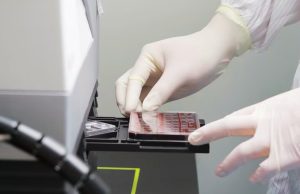Protease inhibitors are also the binding of some functional groups on the active center of protease molecules. After using protease inhibitors, they can reduce or even eliminate protease activity, but protease inhibitors are not substances that do not denature enzyme proteins.
The first crucial step in protein related detection is protein extraction. During the process of protein extraction, proteolytic enzymes are released or activated, which affects the final result. To avoid these situations, sample preparation can be carried out at as low a temperature as possible. In addition, many proteases become inactive above pH 9, so Tris base, sodium carbonate, or alkaline carrier electrolytes can often inhibit protein hydrolysis. However, some proteases remain active under the above conditions, and in this case, we can prevent protein degradation by adding various protease inhibitors.
According to the different catalytic center structures, proteases can be divided into the following four categories:
1. Serine protease
It contains serine and histidine in its active center, such as chymotrypsin, elastase, fibrinolysin, thrombin, subtilisin, trypsin, etc.
2. Cysteine protease (also known as thiol or SH protease)
It contains cysteine in its catalytic center, such as calpain, protease B/C/L, papain, etc.
3. Tianmen Aspartic Acid Protease (Carboxyprotease)
It contains aspartic acid in its active center, such as protease D, papain, renin, etc.
4. Metalloproteinase
It contains metal ions in its catalytic center, such as aminopeptidase, carboxylase A/B, thermophilic protease, etc.
In addition to protease inhibitors, in many research processes, especially when pharmaceutical companies and research institutes are studying pharmacological mechanisms, it is necessary to understand the protein phosphorylation pathway. Therefore, an important step is to accurately observe the general and specific phosphorylation states. Another important protective process of protein extraction is to effectively protect the phosphorylation state.
July 16, 2024
Protease inhibitors are groups that bind to the active center of protease molecules
Share on:
Facebook
Twitter
Pinterest
WhatsApp
Recent posts
We recommend


